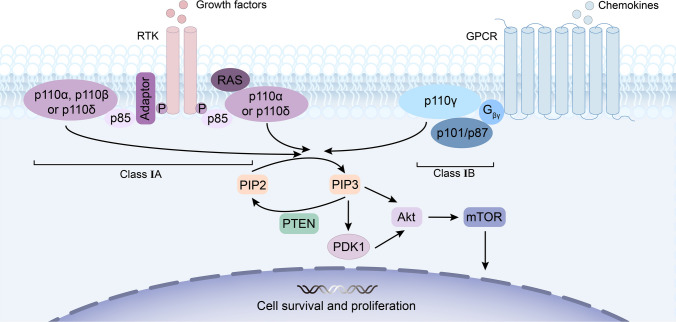Fig. 1.
Overview of the phosphatidylinositol 3-kinase (PI3K) signalling pathway. The PI3K signalling pathway is activated by G protein-coupled receptor (GPCR) or receptor tyrosine kinase (RTK). Class I PI3Ks activate phosphatidylinositol 4,5‑bisphosphate (PIP2) to generate phosphatidylinositol 3,4,5‑trisphosphate (PIP3), and PIP3 can be dephosphorylated by phosphatase and tensin homolog (PTEN) to form PIP2. PIP3 further induces the activation of the downstream protein kinases phosphoinositide-dependent kinase 1 (PDK1), protein kinase B (Akt), and mammalian target of rapamycin (mTOR) to regulate cell survival and proliferation. Class I PI3Ks are divided into class A and class B. The class A PI3Ks are further subdivided into catalytic subunit p110α, p110β, p110δ with p85 regulatory subunit, and class IB include p110γ with p87 or p101 regulatory subunit

